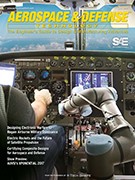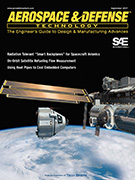Magazine

Aerospace & Defense Technology: June 2023
2023-06-01
Airborne Inspection Sensor Evolves with LiDAR, Mid-IR and Artificial Intelligence Air Force eVTOL Research and Development Programs Make Remote Pilot Progress Creating a Digital Gateway for RF Domain Will Advance Designs That Meet DoD Initiatives Understanding the Unique RF Interconnect Requirements for Ultra-Demanding Hypersonic Missile and Satellite Applications ADS-B Classification Using Multivariate Long Short-Term Memory This analysis extends previous research that used long short-term memory-fully convolutional networks to identify aircraft engine types from publicly available automatic dependent surveillance-broadcast (ADS-B) data. ...Airborne Inspection Sensor Evolves with LiDAR, Mid-IR and Artificial Intelligence Air Force eVTOL Research and Development Programs Make Remote Pilot Progress Creating a Digital Gateway for RF Domain Will Advance Designs That Meet DoD Initiatives Understanding the Unique RF Interconnect Requirements for Ultra-Demanding Hypersonic Missile and Satellite Applications ADS-B Classification Using Multivariate Long Short-Term Memory This analysis extends previous research that used long short-term memory-fully convolutional networks to identify aircraft engine types from publicly available automatic dependent surveillance-broadcast (ADS-B) data. Physics-Guided Neural Network for Regularization and Learning Unbalanced Data Sets Directed energy deposition is of interest to the aerospace and defense industries for the production of novel and complex geometries, as well as repair applications.







